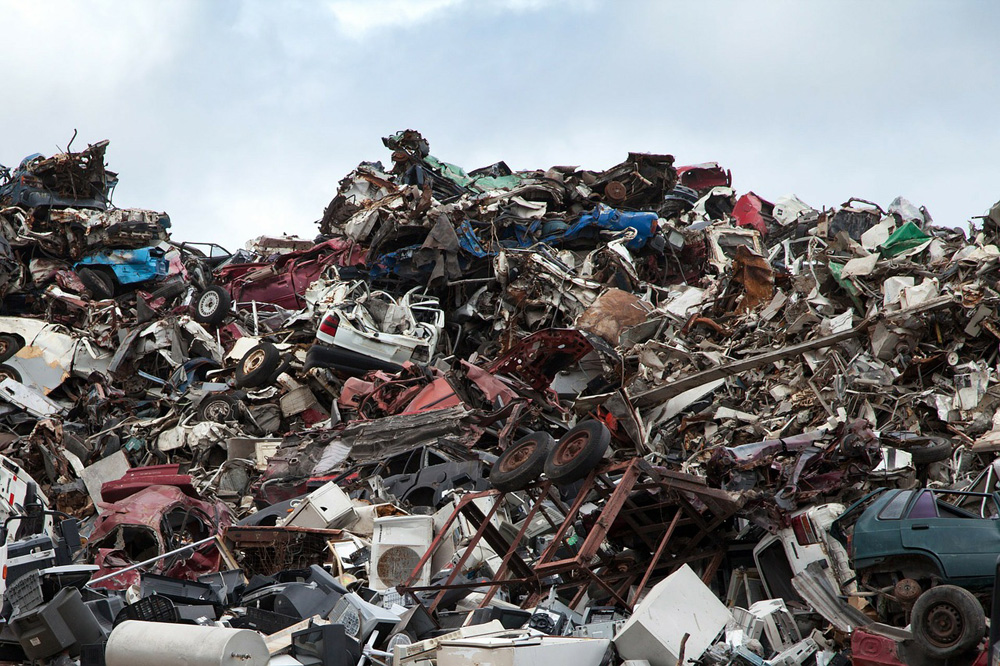7 Ways To Get The Most Money For Your Metal Or Car At A Nearby Scrap Yard
A scrap yard, sometimes referred to as a junkyard, is a place that buys and sells scrap metals, like stainless steel, copper, nickel, aluminum, iron, brass, lead and zinc. But you don’t need raw metal to be able to sell to a scrap yard – most of these places deal with old appliances, vehicles, electronics, and other metal-containing goods to dismantle them for the valuable metals within.
If you’ve got an old car or major household appliance that you want to get rid of, you can take it to a nearby scrap yard, where you’re likely to get some money for it.
Scrap yards frequently buy old, broken down cars or appliances and then resell their hauls to refineries or larger scrap brokers. Your scrap metal gets reused and repurposed for something else later, so it’s better for the environment – and frees you from your clunky, unwanted junk.
Check out the following eight tips to make sure you get the most money for your unwanted metal when you take it to a local scrap yard:
Click here to learn about 35 ways other ways to make extra cash.
1. Knowledge is Power
Before you start selling your scrap metal, it’s important to understand the different types of metal and their value. For example, copper sells for a much higher price than steel. But how do you know what you have?
First, you must understand that metals fall into two categories: ferrous and non-ferrous. Ferrous metals, like steel and iron, are worth much less than non-ferrous metals such as copper, aluminum, brass, bronze, and stainless steel. Even within those categories, prices can vary greatly. It can help to know what common items are made from the various metals:
• Copper – one of the most valuable metals to recycle – can be found in many household items, including plumbing pipes, gutters, roofing materials, and electrical wiring. When it’s in good condition, the metal will be reddish in color, but when worn copper will appear a brown color with rusted green areas. Either can be sold at a nearby scrap yard.
• Aluminum is whitish or silverfish in color, and thin pieces bend easily. The most common source of aluminum you can find is aluminum cans, the type that contain soda or beer. But aluminum is also used in home materials such as siding, gutters, doors and window frames.
• Brass is a heavy metal composed of copper and zinc, giving it a yellowish hue with tinges of red. You will commonly find brass in hardware such as bathroom fixtures, lighting fixtures, door handles, and keys. It also is used on the ends of copper piping. Brass can be sold for a mid-level price range.
• Steel may not be valued as high as other metals, but it is one of the easiest to find. Steel is used to make cars and metal cabinets but is also the metal used to in construction materials such as I-beams, plates and girders. While it may not be worth as much as other metals, it is also heavier, which helps when you are selling it at a scrap yard.
• Stainless steel is composed primarily of iron, but also contains about 8-percent nickel, which means it fetches a heftier price. Stainless steel is used in appliances and kitchenware, so there’s plenty to be found.
2. Use a Magnet
The easiest way to determine if a metal is ferrous or non-ferrous is to test it with a magnet. If a magnet sticks to a piece of metal, there’s a good chance it’s ferrous. If it’s doesn’t stick, it’s probably nonferrous.
You shouldn’t need a large magnet — a pocket-sized variety will be sufficient. Determining if the metals are ferrous or non-ferrous is the first step in determining how much money you can make from it at a nearby scrap yard.
3. Size Matters
Most scrap metal sells based on its weight, therefore bigger is almost always better. Plus, the more scrap metal you have, the greater your negotiating power with the scrap yard. For example, if you have a large load of aluminum, the scrap buyer doesn’t want to lose the sale to the yard down the street.
Therefore, he or she likely will be willing to pay you a little bit more to prevent you from going elsewhere.
Some items are sources of heavy scrap metal. For example, a washing machine generally weighs about 200 pounds, while a refrigerator can weight as much as 250 pounds even after the compressor is removed.
4. Compare Prices
To make the most money for your scrap metal, be sure to compare the prices offered by all local scrap yards. Not only can prices vary depending on a particular nearby scrap yard’s overhead costs, but knowing what one location offers gives you the chance to negotiate a higher price with another.
To discover all the possible locations that buy scrap metal near you, you can search with Google or another search engine with terms such as “scrap yard near me.” Or, you can use your local Yellow Pages to find a list of all area businesses that are categorized as scrap buyers. You also want to ask each place if they pay by cash or check, and if there is a waiting period before you actually are paid.
5. Separate Your Metals
Before visiting a scrap yard with the items you’ve collected, it’s important to separate your metals by type. Sort your ferrous metals from your non-ferrous metals, then sort them again based on their metal composition. Since every metal is worth a different amount, it’s vital you know which types you have and weight them separately.
You can sort your smaller items by placing them in separate buckets. You can also sort them by the level of cleanliness since you will often be paid more for clean metals than dirty metals.
6. Consider Unusual Items
Sometimes scrap metal can be found in unusual sources. For example, most people don’t realize that Christmas lights are a great source of copper – and can often be found prevalently at yard sales and swap meets. The copper within them may not weigh much, but the strings of lights can be obtained pretty cheaply, so there is a profit to make.
7. Store and Transport
When you are ready to sell your scrap metal at a nearby scrap yard, you will need a way to transport it there. How you transport it depends largely on how much space it takes. Two or three buckets can probably be carried in the back of a car, but if you are transporting large items like appliances, you’ll need a truck.
Be careful if using your own or borrowing someone’s new vehicle as these items easily can scratch a truck bed. If you are hoping to sell an old car, you probably will need to have it towed. But you’ll want to make sure the cost of the tow won’t exceed what you can get for the scrap metal in the car. This generally shouldn’t be a problem, though.
Getting the Most Out of Your Scrap Yard Sale
Now you’re fully prepared to say goodbye to the unwanted metal products lying around your property. If you’ve got an old, unusable car, piece of electronic equipment, decrepit household appliances, a scrap yard nearby will very likely pay you to take it off your hands. Selling at a scrap yard or recycling for extra money, are two of the best ways to get rid of unwanted junk.
It’s a win-win: you get rid of your junk, while getting paid for your trouble and supporting the repurposing of recyclable materials. The Earth will thank you – and so will your less-cluttered property.










































